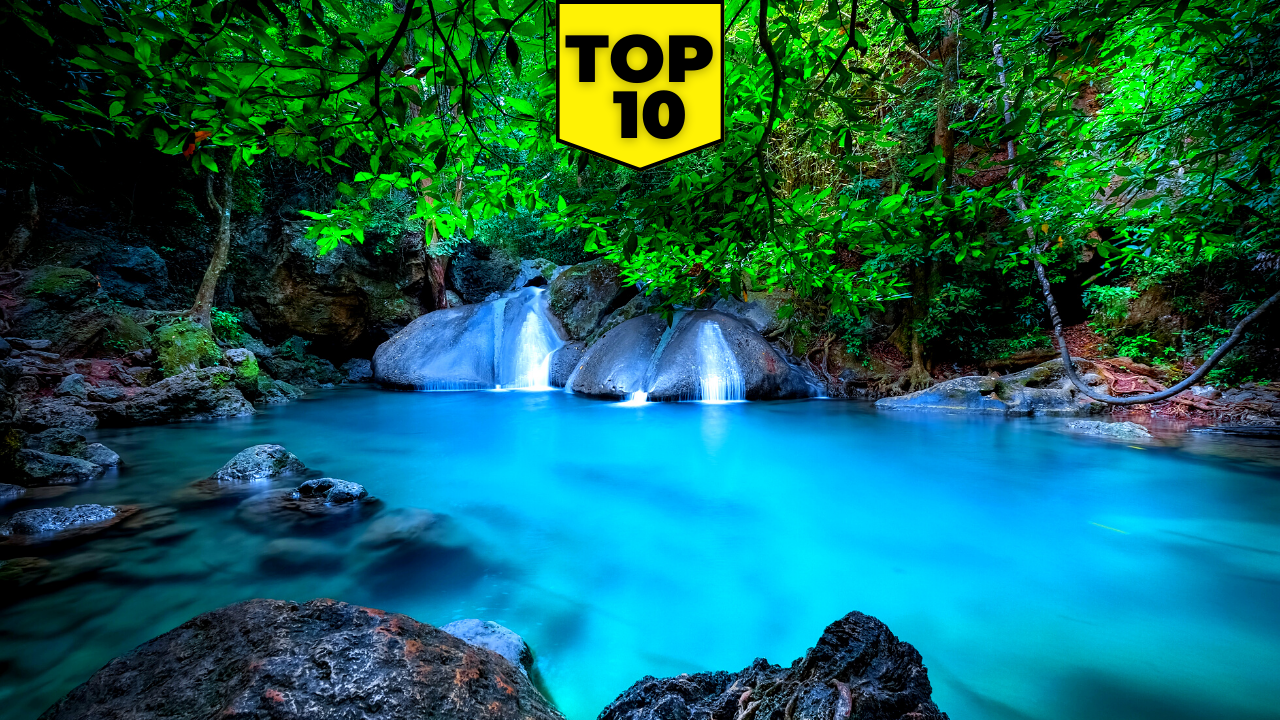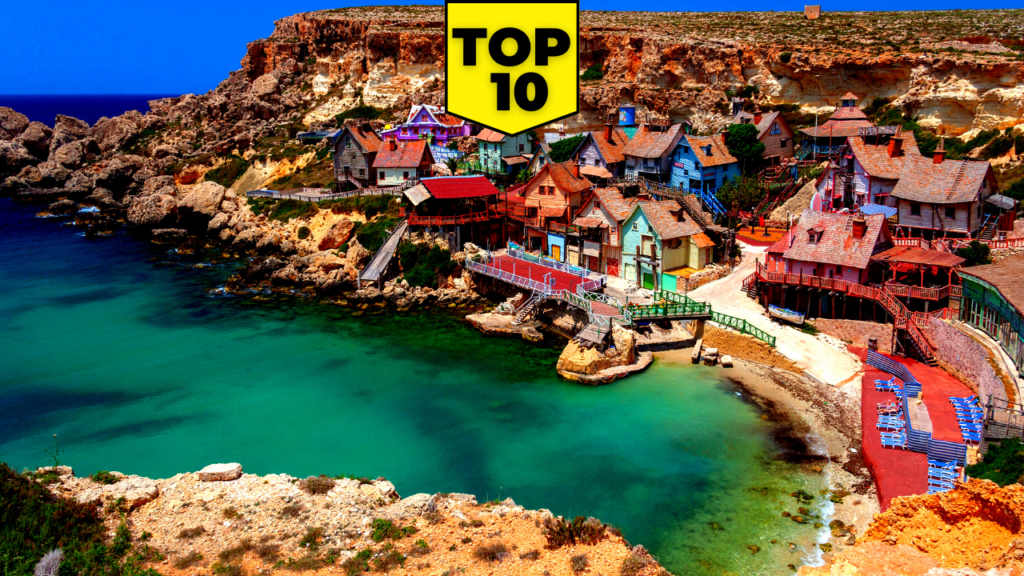
Malta is the world’s tenth-smallest country in terms of area. However, let’s begin by setting the record straight, Malta is not an island, or two, it’s an archipelago of 5. Only the two largest islands, Malta and Gozo, are regularly inhabited. The third biggest, Comino, features just one luxury resort. The remaining four are uninhabited.
But interestingly, Malta has been inhabited since approximately 5900 BC! That’s way longer than many nations today. Its location, right smack in the center of the Mediterranean, placed it at the crossroads of major powers throughout the millennia.
The Phoenicians and Carthaginians, Romans, Greeks, Arabs, Normans, Aragonese, Knights of St. John, French, and British, took turns ruling the islands. Creating a fascinating mixed heritage. There is a distinct North African influence, with a language derived from Arabic mixed with Italian.
It is the legendary Knights of Malta, who launched the Crusades to reclaim the Holy Land from the Seljuk Turks. But that is just one part of the history behind this palm-tree-filled landscape of lovely hilltop towns, laid-back seaports, colorful old fishing villages, and natural attractions.
Table of contents
10. Ghajn Tuffieha Bay and Gnejna Bay Beaches

Let’s start off our list with a pair of nice, warm beaches. Though not adjacent to each other, you can choose either of these beaches for your sun and sand needs.
At Ghajn Tuffieha Bay, enjoy an unspoiled beach surrounded by cliffs and sloping hillsides. Considered one of Malta’s top beaches, it is favored for its quiet, laid-back ambiance.
Gnejna Bay, on the other hand, features a gorgeous orange-sand beach, where you can even water ski or paddle a canoe. Nearby are the ruins of Roman baths and ancient cart ruts, which intrigue scholars and visitors alike.
9. Hagar Qim Temples and Mnajdra Temples
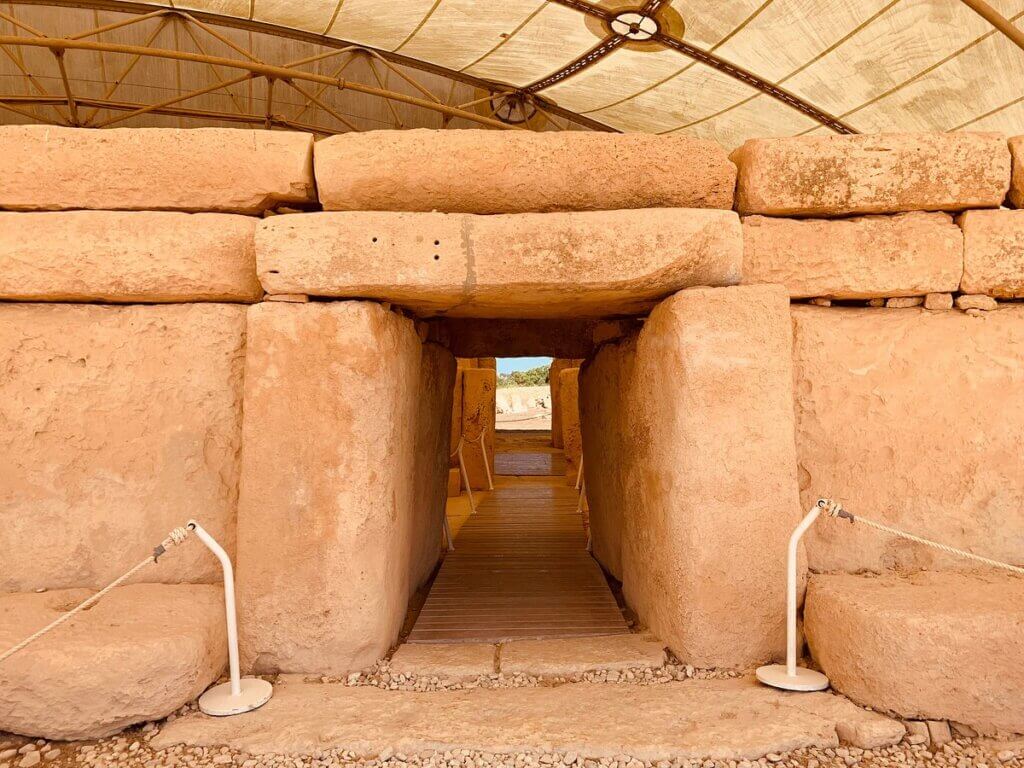
This is a pair of prehistoric megalithic sites overlooking the Mediterranean Sea, just a stone’s throw away from each other. The Hagar Qim Temples date back to 3600 BC and were buried across the millennia until it was rediscovered in 1839.
Each temple was built as an individual place of worship, and the largest megalith of this 5,000-year-old site is more than seven meters long and weighs approximately 20 tons. How did they do it? Little boulders, the size of bowling balls, strewn across the site were most probably used like castors to move the massive megaliths into place.
Alongside, the Mnajdra Temples is a complex composed of three different temples built a few hundred years apart from each other. The doorway of the South Temple is flanked by two immense blocks with small holes that mark the position of the rising sun on the Equinoxes and the Solstices.
8. The Blue Grotto

A winding cliffside road overlooking the Mediterranean Sea is your lead-up to this spectacular nature site. With waters that shine a brilliant blue under the sun, sharply contrasted by limestone caves, it’s a breathtaking view.
According to mythology, the Blue Grotto was home to the sirens or sea nymphs, who captivated sailors with their charms. You can take a guided boat tour in a brightly painted Maltese fishing boat called a Luzzu, and pass by six caves, including the Blue Grotto.
You can also visit the village of Wied iz-Zurrieq and hit its cliffside restaurants with marvelous views.
7. Blue Lagoon
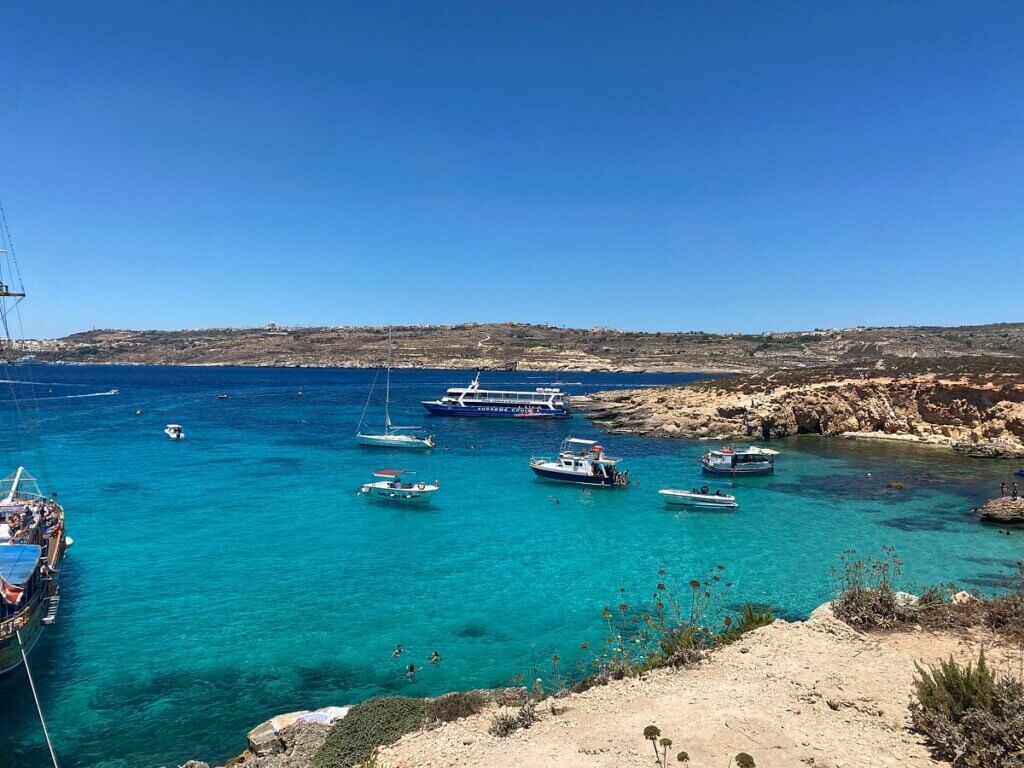
Found on the island of Comino, the Blue Lagoon is a mesmerizing sight with crystal-clear turquoise waters washing over a white-sand seabed.
This lagoon feels like a giant swimming pool because the water is temperate, there are no waves, and the shallow end is safe enough for children. If you’re a good swimmer, you can cross to the cove and the tiny beach on the other side.
You can also take nature walks and hike across Comino island, or focus on the water with snorkeling and scuba diving.
6. Tarxien Temples
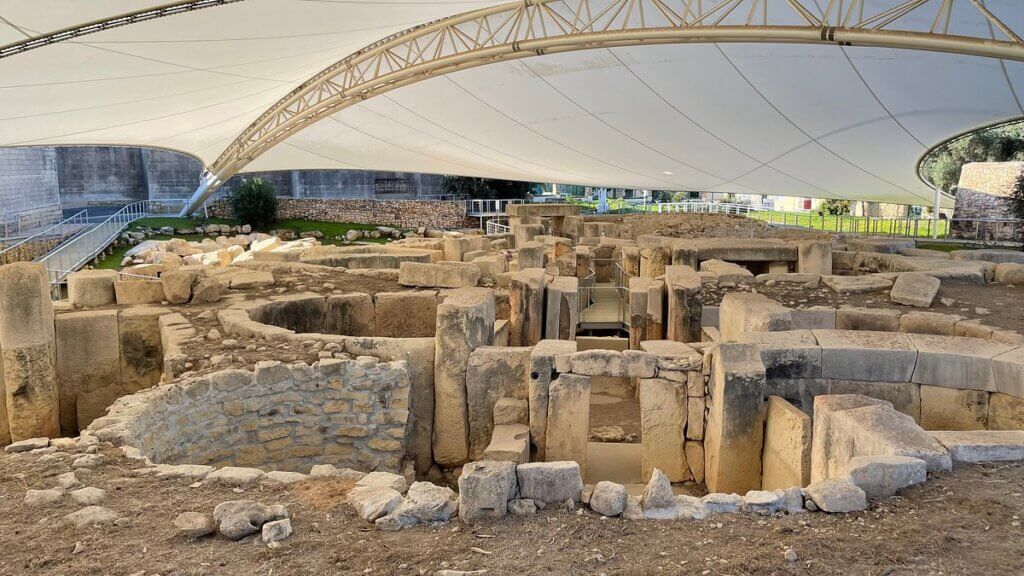
Composed of four megalithic structures, the UNESCO-listed Tarxien Temples is the largest and best-preserved prehistoric site in Malta.
Excavated in 1914, the site displays Malta’s mysterious prehistoric culture during the Late Neolithic Period more than 5,000 years ago. The stone walls of the four adjoining temples are decorated with surprisingly intricate spiral patterns and animal figures.
The South Temple contains reliefs that depict goats, pigs, and a ram, as well as the unique statue of a fertility goddess. The East Temple has recognizable oracle holes. And the Central Temple has an arched roof that showcases technically advanced construction techniques.
5. Hal Saflieni Hypogeum
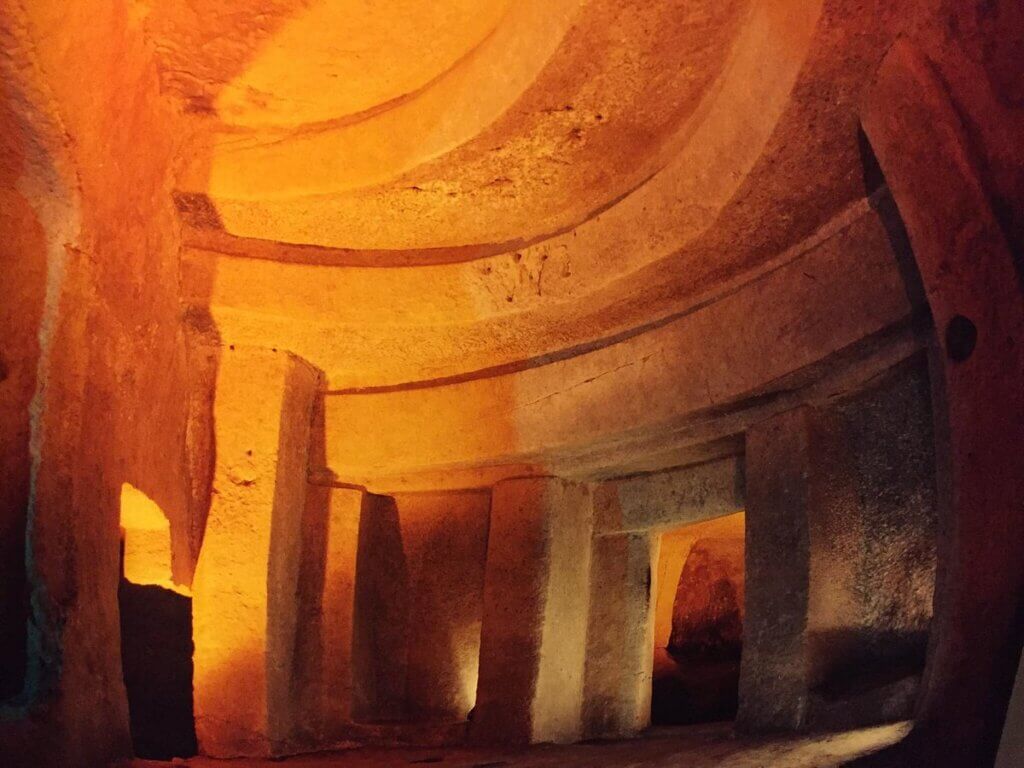
Hal Saflieni Hypogeum was an underground cemetery during the Neolithic era and is a UNESCO World Heritage landmark. Carved from limestone using rock tools, the interconnected chambers include passages and stairways.
Dating back to 4000 BC, the beautiful carvings and paintings in red ochre were preserved excellently. It has provided archaeologists with discoveries about Neolithic culture and thinking.
Some of the artifacts found here are now at the National Museum of Archeology in Valletta, including unique clay sculptures; stone figures, and a rare prehistoric object that depicts a woman on what looks like a couch (The Sleeping Lady).
Primo tip though, for the sake of conservation, Hal Saflieni Hypogeum has a limit of 10 visitors every hour. So book ahead online.
4. Rabat
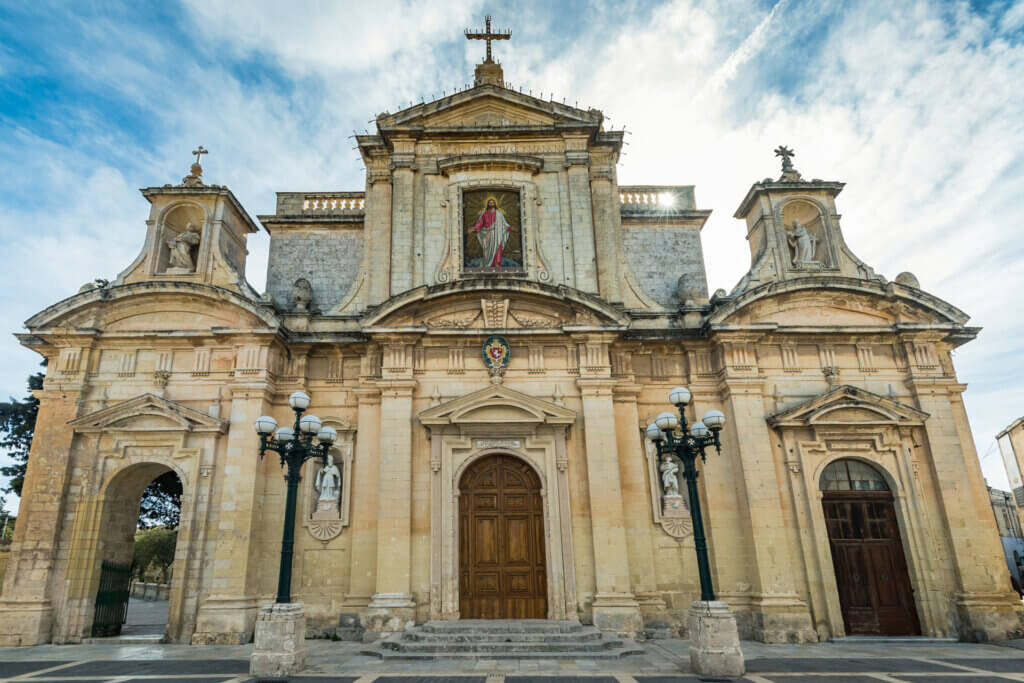
Rabat is your first stop if you’re going on a tour of the cities of Mdina and Rabat because they are sometimes considered to be one unified area. The word “Rabat” means “suburb” in Maltese.
Visit architectural gems like Casa Bernard, a grand 16th-century house that belonged to a noble Maltese family. The house is decorated with antique furniture, painted masterpieces, and other notable works of art.
The Domvs Romana Museum provides a glimpse of everyday life during the ancient Roman era, with exhibits that feature their fashion and cuisine. It was established on the ruins of a Roman aristocratic townhouse and contains some of the finest 1st-century BC Roman mosaics in the world.
Along with this, is the Wignacourt Museum which displays a collection of ancient Roman artifacts, as well as paintings by celebrated Maltese painter Mattia Preti, and other esteemed European artists.
Another landmark to see is the 17th-century Parish Church of St. Paul’s, which stands above St. Paul’s Grotto where it is said that Saint Paul found refuge during his stay in Malta. And St. Dominic’s Convent, an important pilgrimage destination dating back to the 15th century, contains a marble statue of the Virgin Mary that is considered miraculous.
3. Mdina
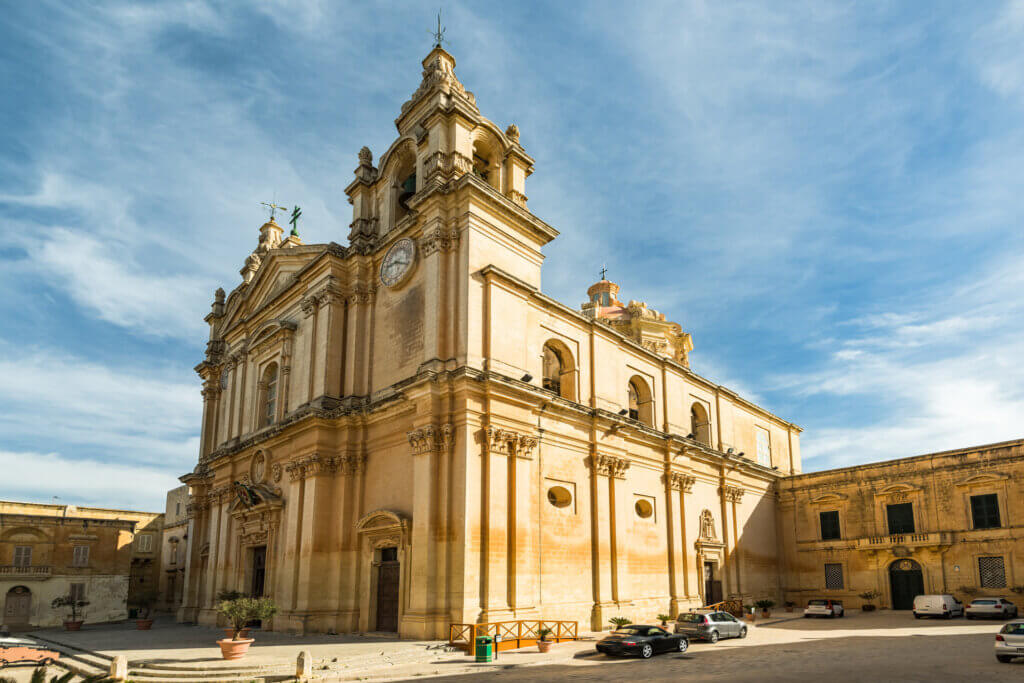
Mdina is a fairy-tale city. A fantastic medieval hilltop town that is listed as a UNESCO World Heritage Site. Steeped in history, even your first few steps are an experience. As you pass through the dramatic Main Gate to enter the city, giving the impression of walking back in time. Once you’ve entered past the ancient ramparts, you’d be met with beautiful streets and old sandstone buildings.
Visit St. Paul’s Cathedral, a glorious Baroque building with a lavishly decorated sanctuary featuring a magnificent dome, marble columns, gilded details, gorgeous ceiling paintings, and a precious 12th-century icon of the Madonna.
There are also historic palaces like the Palazzo Vilhena (Saint Publius Square), an 18th-century Magisterial Palace with a facade inspired by the Versailles. It now houses Malta’s National Museum of Natural History, which displays exhibits such as prehistoric fossils.
The Palazzo Falson (Villegaignon Street) is an authentic medieval palace that preserved its original style from its glory years and showcases exquisite art, antiques, Oriental carpets, and ancient coins.
2. Gozo
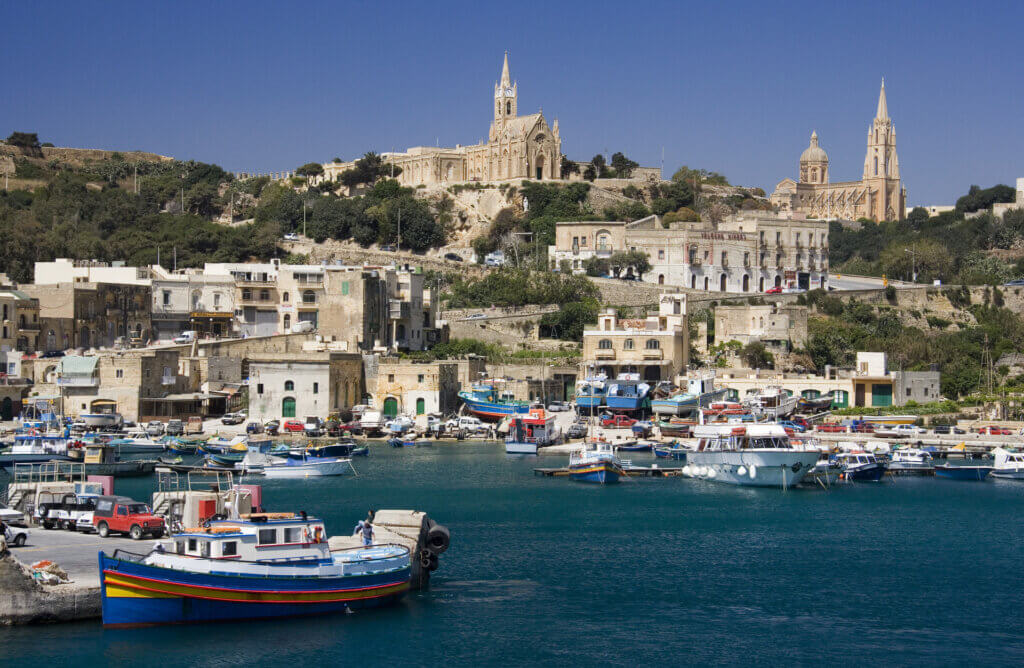
Gozo, the second largest, is the most idyllic island in the Maltese archipelago. With its quiet towns and pristine beaches, the island is the perfect place to just sit calmly and unwind for a few days. The weather is perfect. And the small farms that cover the island’s valleys and rolling hills offer such a relaxing sight.
More traditional than the island of Malta, get to see the fortified medieval city of Victoria, the bustling seaside resort of Marsalforn, and the most important archaeological site of the Maltese Islands, the Temples mentioned earlier in our list. Even the minor towns here have grandiose Baroque churches to showcase.
And if you want to take a dip, head down to Ramla Bay with its wide, sandy shore and gentle waters.
1. Valletta
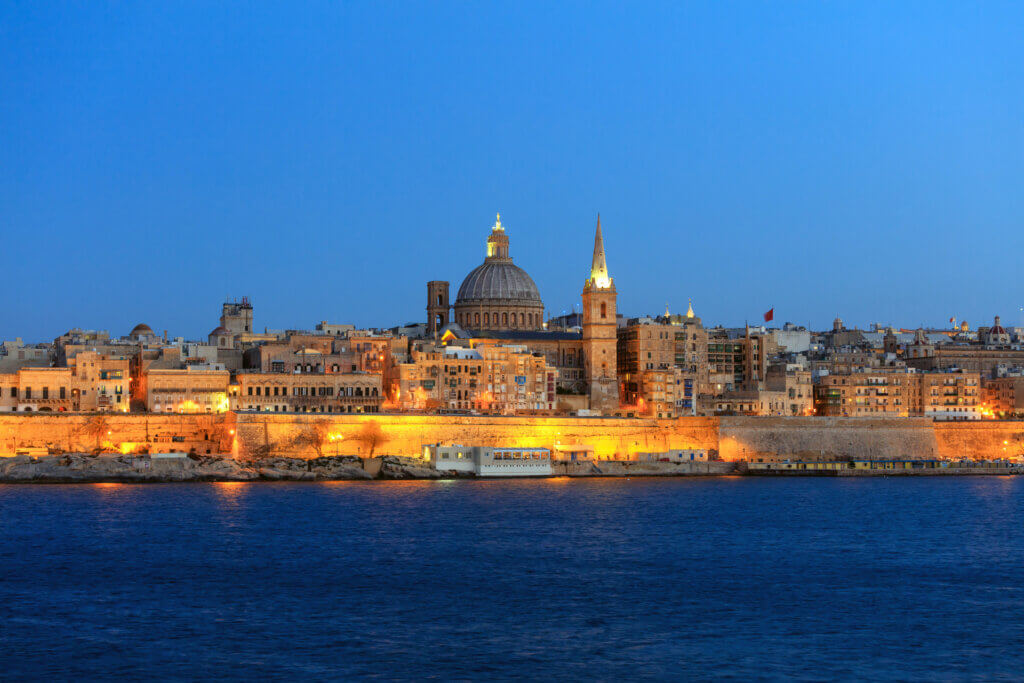
The capital of the Republic of Malta, Valletta exudes elegance reminiscent of the grandeur of the Knights of Malta, the European noblemen who were granted the Maltese Islands by the King of Spain in 1530. And you’d be surprised to know that Valletta is the first ever planned city in Europe.
The city was planned out back in 1565 during the Order of St. John of Jerusalem, as they set out to build a capital worthy of their aristocratic stature. And you’d see it in the city’s grid plan, orderly public squares, and of course, grand architecture.
Fronting the sea are two harbors: the Grand Harbor and Marsamxett Harbor. At the center is Saint John’s Co-Cathedral, a 16th-century church built by the different orders of knights, hailing from countries such as France, Spain, and Italy.
There is also the massive Grandmaster’s Palace, once the residence of the Knights of Malta. Filled with painted masterpieces, an armory, and an exhibit that tell the story of the knights’ military victories. Feel free to explore these and many other structures in the city that reek of history.
Walking around is a breeze. And don’t worry, the city, in fact, the entire island, has an efficient bus system with Valletta as its hub. If you get hungry, how about some food you can only find in Malta? Grab a delicious Pastizzi, a filo pastry baked with ricotta cheese or mushy peas. Then freshen up with a can of Kinnie, a soda that uses chinotto bitter oranges, spices, and herbs unique to the region.



